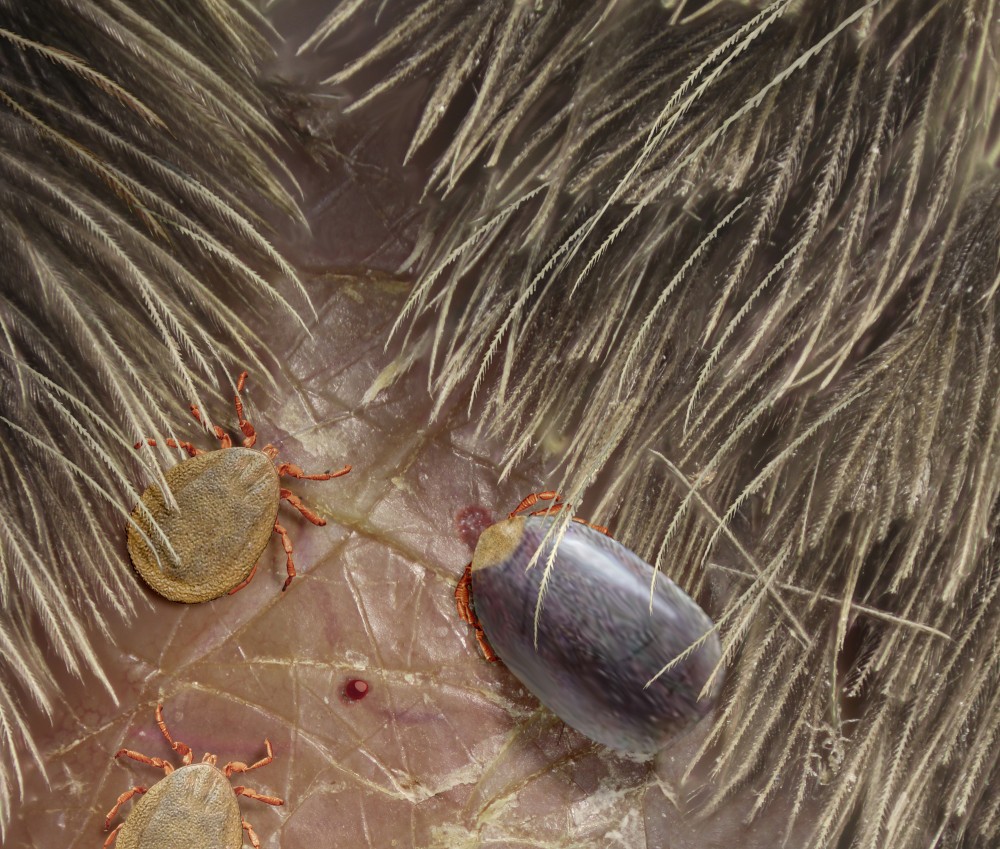Deinocroton on:
[Wikipedia]
[Google]
[Amazon]
''Deinocroton'' is an extinct genus of
 The strongly pitted surface of the body and large volume increase (8.5x) of engorged females suggests that the feeding behaviour was most similar to living soft bodied ticks and ''
The strongly pitted surface of the body and large volume increase (8.5x) of engorged females suggests that the feeding behaviour was most similar to living soft bodied ticks and ''
tick
Ticks are parasitic arachnids of the order Ixodida. They are part of the mite superorder Parasitiformes. Adult ticks are approximately 3 to 5 mm in length depending on age, sex, and species, but can become larger when engorged. Ticks a ...
. It is known from four species found in Burmese amber
Burmese amber, also known as Burmite or Kachin amber, is amber from the Hukawng Valley in northern Myanmar. The amber is dated to around 100 million years ago, during the latest Albian to earliest Cenomanian ages of the mid-Cretaceous period. Th ...
, dating to the earliest part of the Cenomanian
The Cenomanian is, in the International Commission on Stratigraphy's (ICS) geological timescale, the oldest or earliest age (geology), age of the Late Cretaceous epoch (geology), Epoch or the lowest stage (stratigraphy), stage of the Upper Cretace ...
stage of the Late Cretaceous, around 99 million years ago.
Taxonomy
Four species have been named, including the type ''D. draculi'', ''D. copia, D. bicornis'' and ''D. lacrimus'' all fromBurmese amber
Burmese amber, also known as Burmite or Kachin amber, is amber from the Hukawng Valley in northern Myanmar. The amber is dated to around 100 million years ago, during the latest Albian to earliest Cenomanian ages of the mid-Cretaceous period. Th ...
, which dates to the late Albian
The Albian is both an age (geology), age of the geologic timescale and a stage (stratigraphy), stage in the stratigraphic column. It is the youngest or uppermost subdivision of the Early Cretaceous, Early/Lower Cretaceous epoch (geology), Epoch/s ...
-early Cenomanian
The Cenomanian is, in the International Commission on Stratigraphy's (ICS) geological timescale, the oldest or earliest age (geology), age of the Late Cretaceous epoch (geology), Epoch or the lowest stage (stratigraphy), stage of the Upper Cretace ...
stages of the Cretaceous period, around 100 million years ago. The genus is suggested to be more closely related to ''Nuttalliella
''Nuttalliella'' is genus of tick. It contains a single living species, ''Nuttalliella namaqua'' found in southern Africa, having been reported from Tanzania, Namibia and South Africa. The genus is placed in its own family, Nuttalliellidae. It ca ...
'' than to the two major living families of ticks, which is supported by the anatomy of its leg joints. While originally placed in its own family Deinocrotonidae, a 2024 study suggested that it should be placed into Nuttalliellidae, along with ''Nuttalliella'' and the extinct genus '' Legionaris'' also known from Burmese amber''.''
Etymology
The name of the genus ''Deinocroton'' is composed of two words from the ancient Greek "deinos", "terrible", and "krotṓn", "krotṓn", "tick". The name of the species ''draculi'' refers to thevampire
A vampire is a mythical creature that subsists by feeding on the Vitalism, vital essence (generally in the form of blood) of the living. In European folklore, vampires are undead, undead humanoid creatures that often visited loved ones and c ...
Count Dracula
Count Dracula () is the title character of Bram Stoker's 1897 gothic horror novel ''Dracula''. He is considered the prototypical and archetypal vampire in subsequent works of fiction. Aspects of the character are believed by some to have been i ...
from the epistolary novel ''Dracula
''Dracula'' is an 1897 Gothic fiction, Gothic horror fiction, horror novel by Irish author Bram Stoker. The narrative is Epistolary novel, related through letters, diary entries, and newspaper articles. It has no single protagonist and opens ...
'' by British writer Bram Stoker
Abraham Stoker (8 November 1847 – 20 April 1912), better known by his pen name Bram Stoker, was an Irish novelist who wrote the 1897 Gothic horror novel ''Dracula''. The book is widely considered a milestone in Vampire fiction, and one of t ...
.
Description
''Deinocroton'' is distinguished from other ticks by a suite of characters relating to the structure of its integument, the morphology of the palps, and the preanal groove shape. The surface of the body is densely pitted with deep pits, and eyes are absent.Ecology
 The strongly pitted surface of the body and large volume increase (8.5x) of engorged females suggests that the feeding behaviour was most similar to living soft bodied ticks and ''
The strongly pitted surface of the body and large volume increase (8.5x) of engorged females suggests that the feeding behaviour was most similar to living soft bodied ticks and ''Nuttalliella
''Nuttalliella'' is genus of tick. It contains a single living species, ''Nuttalliella namaqua'' found in southern Africa, having been reported from Tanzania, Namibia and South Africa. The genus is placed in its own family, Nuttalliellidae. It ca ...
,'' with a rapid engorgement time (minutes to hours), and multiple gonotrophic cycles. The preferred hosts have been inferred to be feathered dinosaurs
A feathered dinosaur is any species of dinosaur possessing feathers. That includes all species of birds, and in recent decades evidence has accumulated that many non-avian dinosaur species also possessed feathers in some shape or form. The exte ...
, based on the association of known specimens with feathers in amber. The specimens were found associated with hastisetae, specialised hair of dermestid beetle larvae, which suggests that they inhabited nests.
References
{{Taxonbar, from=Q50177259 Cretaceous insects of Asia Ticks Burmese amber